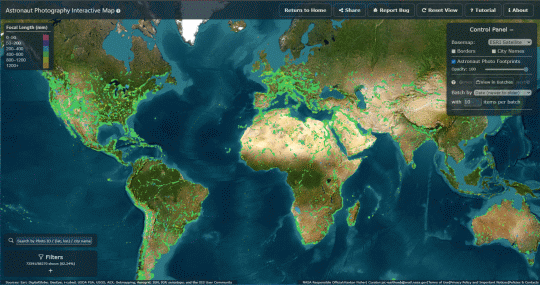ISS043-E-101431
| NASA Photo ID | ISS043-E-101431 |
| Focal Length | 800mm |
| Date taken | 2015.04.10 |
| Time taken | 16:19:01 GMT |
Resolutions offered for this image:
1000 x 701 pixels 540 x 379 pixels 4928 x 3280 pixels 720 x 480 pixels 4928 x 3280 pixels 640 x 426 pixels
1000 x 701 pixels 540 x 379 pixels 4928 x 3280 pixels 720 x 480 pixels 4928 x 3280 pixels 640 x 426 pixels
Country or Geographic Name: | BRAZIL |
Features: | FLORIANOPOLIS, AIRPORT, SUNGLINT |
| Features Found Using Machine Learning: | |
Cloud Cover Percentage: | 10 (1-10)% |
Sun Elevation Angle: | 50° |
Sun Azimuth: | 333° |
Camera: | Nikon D4 Electronic Still Camera |
Focal Length: | 800mm |
Camera Tilt: | 23 degrees |
Format: | 4928E: 4928 x 3280 pixel CMOS sensor, 36.0mm x 23.9mm, total pixels: 16.6 million, Nikon FX format |
Film Exposure: | |
| Additional Information | |
| Width | Height | Annotated | Cropped | Purpose | Links |
|---|---|---|---|---|---|
| 1000 pixels | 701 pixels | No | No | Earth From Space collection | Download Image |
| 540 pixels | 379 pixels | Yes | No | Earth From Space collection | Download Image |
| 4928 pixels | 3280 pixels | No | No | NASA's Earth Observatory web site | Download Image |
| 720 pixels | 480 pixels | Yes | Yes | NASA's Earth Observatory web site | Download Image |
| 4928 pixels | 3280 pixels | No | No | Download Image | |
| 640 pixels | 426 pixels | No | No | Download Image |
Download Packaged File
Download a Google Earth KML for this Image
View photo footprint information
Download a GeoTIFF for this photo
Image Caption: Florianopolis, southern Brazilian
This image was taken as astronauts aboard the International Space Station flew over the headlands of the southern Brazilian port city of Florianopolis. The east side (image top right) and west side (image lower left) of the city are joined by bridges that span the 400 m-wide narrows. The International Airport of Florianopolis appears lower right. This city has one of the highest quality-of-life indices in Brazil. The image is illuminated by partial reflection of the sun---revealing all kinds of detail in the water surface, especially wind streaks (image top left) and boat wakes (image center, image top left). The water surface south of the city is far brighter than the surface to the north, probably because the hills where the city is built protect water surfaces from the wind (wind was from the north on this day), producing calmer water and therefore a brighter reflection.
Crews have the sense of the glint point moving across the Earth's surface as fast as they are orbiting the planet. This is an example of the training crews receive in the special effects inherent in near-glint-point images of water bodies.
This image was taken as astronauts aboard the International Space Station flew over the headlands of the southern Brazilian port city of Florianopolis. The east side (image top right) and west side (image lower left) of the city are joined by bridges that span the 400 m-wide narrows. The International Airport of Florianopolis appears lower right. This city has one of the highest quality-of-life indices in Brazil. The image is illuminated by partial reflection of the sun---revealing all kinds of detail in the water surface, especially wind streaks (image top left) and boat wakes (image center, image top left). The water surface south of the city is far brighter than the surface to the north, probably because the hills where the city is built protect water surfaces from the wind (wind was from the north on this day), producing calmer water and therefore a brighter reflection.
Crews have the sense of the glint point moving across the Earth's surface as fast as they are orbiting the planet. This is an example of the training crews receive in the special effects inherent in near-glint-point images of water bodies.




